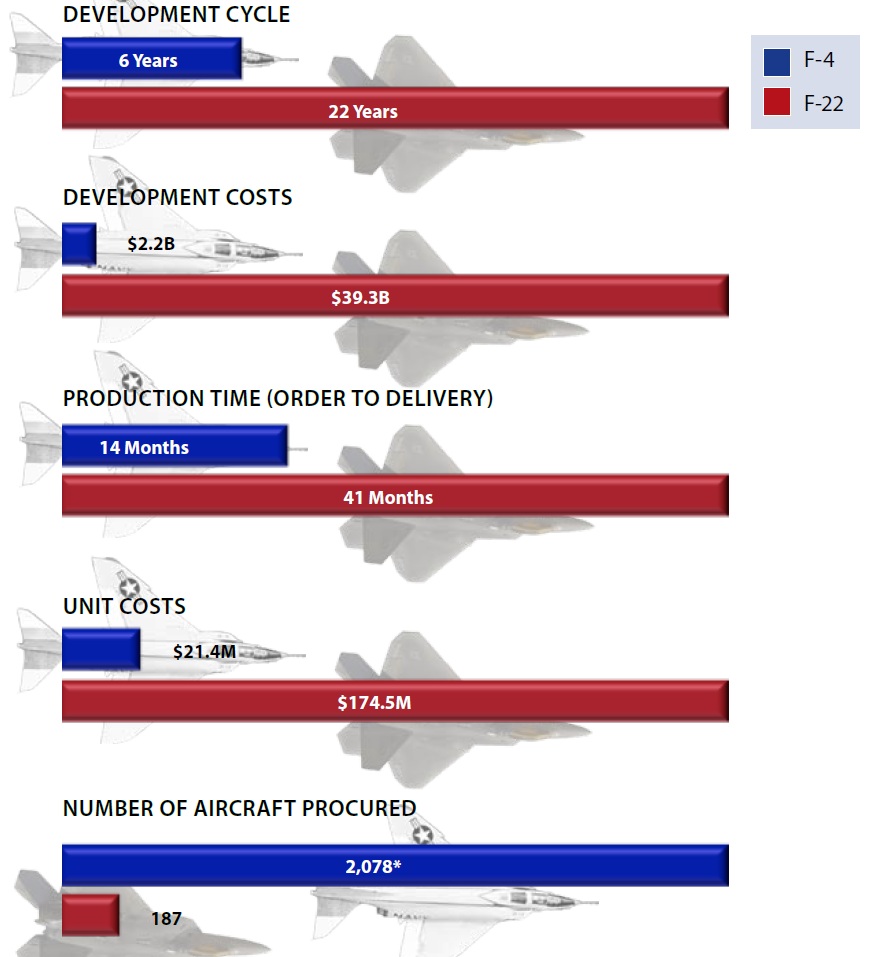 Print This Post
Print This Post- The Strategist - https://www.aspistrategist.org.au -
Graph of the week: the high cost of high costs
Posted By Andrew Davies on January 23, 2014 @ 13:00
After watching the climactic battle scene in Return of the Jedi for the first time, my 8-year-old daughter said, 'They shouldn’t build those Death Stars anymore. They keep getting blown up'. She may be a little short for a stormtrooper, but the kid’s got a point.
Yes, the Empire should stop building Death Stars. It turns out the DoD shouldn’t build them either, metaphorically speaking. What sort of system fits into this category? I’ll resist the urge to give specific examples and instead will simply point out that any enormous project that is brain-meltingly complex, ravenously consumes resources, and aims to deliver an Undefeatable Ultimate Weapon is well on its way to becoming a Death Star, and that’s not a good thing.
Army (n= 97) | Navy (n=146) | Air Force (n=179) | |
| Total cost growth | upward | ||
| Work content growth | upward | ||
| Costs-over-target | downward | ||
| Schedule growth | downward | ||
| Duration | upward |
 * USAF acquisition only. Total F-4 production was 5,195. (Figure reproduced with kind permission of CNAS.)
* USAF acquisition only. Total F-4 production was 5,195. (Figure reproduced with kind permission of CNAS.)
Article printed from The Strategist: https://www.aspistrategist.org.au
URL to article: https://www.aspistrategist.org.au/graph-of-the-week-the-high-cost-of-high-costs/
[1] Process over platforms: a paradigm shift in acquisition through advanced manufacturing: http://www.cnas.org/sites/default/files/publications-pdf/CNAS_ProcessOverPlatforms_FitzGerald.pdf
[2] additive manufacturing: http://additivemanufacturing.com/basics/
[3] one of my favourite papers on defence acquisition: http://www.dau.mil/pubscats/ATL%20Docs/Sep-Oct11/Ward.pdf
[4] decline in the size: http://www.aspistrategist.org.au/a-strategist-retrospective-the-declining-usaf-tactical-fighter-fleet/
[5] ageing of: http://www.aspistrategist.org.au/graph-of-the-week-why-the-us-air-force-needs-the-f-35-joint-strike-fighter/
[6] started to worry: http://www.realcleardefense.com/articles/2013/12/05/will_americas_next_aircraft_carrier_shrink_the_navy_106990.html
[7] not by everyone: http://www.aspistrategist.org.au/aspi-recommends-augustines-laws-2/
[8] looking a bit more like Death Stars: http://www.cnas.org/publications/reports/at-what-cost-a-carrier#.Ut3ZkrRxXRY
[9] a recent statistical analysis: https://dod.defense.gov/Portals/1/Documents/pubs/PerformanceoftheDefenseAcquisitionSystem-2013AnnualReport.pdf
[10] Image: http://www.aspistrategist.org.au/wp-content/uploads/2014/01/CNAS_aircraft_comparison.jpg
[11] argued last year: http://www.aspistrategist.org.au/geek-of-the-week-frederick-lanchester-and-why-quantity-is-a-quality/
[12] still good reasons: http://www.aspistrategist.org.au/the-decline-in-usaf-fighter-capability-and-the-unmanned-future/